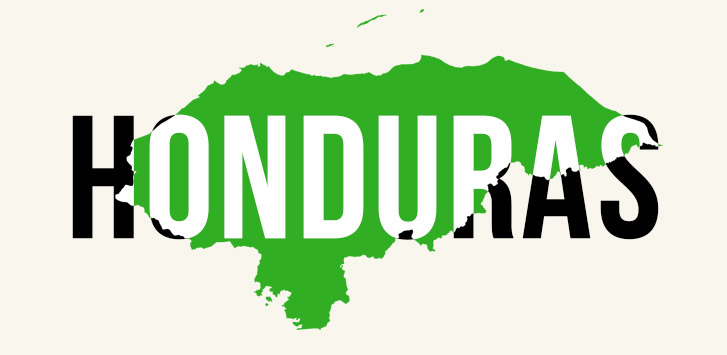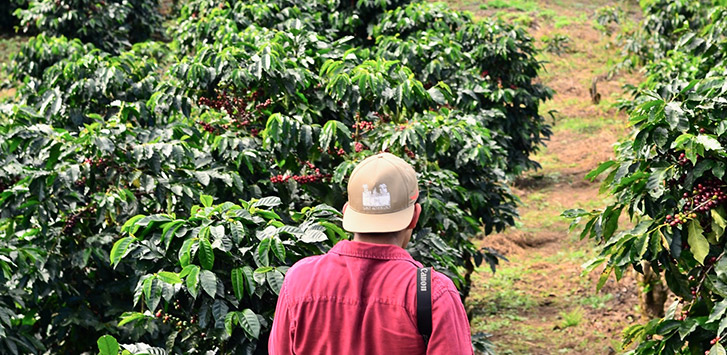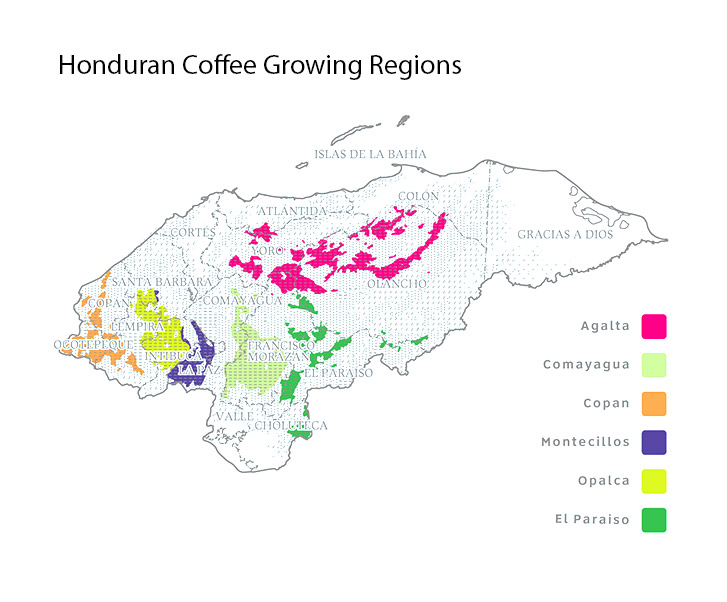
Honduras is the largest coffee producer in Central America and the 6th largest producer in Latin America, after Brazil and Colombia. Expanding from mainly internal consumption, Honduras is now the 6th largest exporter throughout the world based on the volume of coffee. Currently, over 100,000 Honduran families are involved in the coffee industry with 70% of Honduras coffee cultivated and harvested by small farms.
History

Coffee beans arrived in Honduras in the late 1700s by way of Spanish traders from the Caribbean. By 1894, the coffee industry did not look much different from the late 1700s. Hondurans consumed most of the coffee grown, viewing bananas as their cash crop because of their faster turn-around-time.
Almost a century later, in 1949, a new political leader repaired the roads, stabilizing the infrastructure, increasing coffee transports, and creating better access to outside economies. Before this, Honduras sent its coffee to Guatemala to earn a fair price, since its lack of infrastructure disabled them from selling the coffee beans more widely. The 1960s were a turning point for the Honduran coffee industry, as banana crops began to decline, coffee slowly rose to take its place.
The coffee industry was never smooth sailing for Honduras. After building up the infrastructure, 1998 Hurricane Mitch wiped out 4/5 of all coffee crops in Honduras, which was followed by a coffee price crisis. The market became oversaturated, causing prices to drop, forcing families to migrate to the United States.
Out of the coffee price crisis came the Instituto Hondureno del Cafe (IHCAFE). IHCAFE made a name for Honduran coffee, promoting coffee within and abroad, providing training to farmers, gaining low-interest loans for equipment, and training the next generation of Hondurans in coffee quality control through the national cupping school.
After all of its struggles, in 2011, Honduras was crowned the highest producer of coffee in Central America and the world’s highest producer of wet-processed Arabica by Buena Vida Coffee.
Growing Regions

Honduras has three coffee-growing standards: Strictly High Grown (1350 m.), High Grown (1200 - 1350 m.), and Central Standard (sea level to 1200m.). Rich in diversity, variety, altitudes, and micro-climates, Honduras’ coffee growing regions cultivate unique and delightful flavor profiles.
Copan
Copan is the most famous region. Located in the Western part of Honduras, it boasts cooler temperatures and an elevation of 1 - 1.5 km. As part of the Honduran Western Coffees (HWC) Geographical Indication, its coffee is known for its notable origin. Copan cultivates flavor profiles that are sweet with delicate acidity, a bold, creamy body, and a lingering finish. Notes of chocolate, caramel, and citrus permeate the cup.
Opalaca
Opalaca is also part of the HWC origin. At a high altitude of 1.5 km., Opalaca grows coffee beans that are rich in flavor. The tasting notes feature berries, fruits, and mango. Boasting a delicate acidity, bright aromas, and balanced aftertaste, this coffee has won awards from several farmers.
Montecillos
Montecillos is the first origin denomination of Cafe de Marcala. This region produces the most coffee in Honduras. Located in the southwest, Montecillos has elevations of 1.6 km and cold nights that slow down the fruits ripening, sweetening the flavor. Coffee beans grown here taste of stone fruit, peach, apricot, and caramel with a velvety body and bright acidity.
Comayagua
Located in the center of Honduras, Comayagua rises to 1.5 km, producing a delightful flavor profile. Coffee grown here has a velvety mouthfeel and creamy, rich body with bright acidity. You can taste notes of citrus in this cup.
El Paraiso
El Paraiso is in southern Honduras at an elevation of 1.4 km. Within the past couple of years, many coffee farms from this area have won awards for their coffee. Each cup of coffee from here has tasting notes of green apple, peach, blueberries, champagne, grapes, mangos, and subtle jasmine tones. The sweetly citric beans brew a smooth cup with floral acidity and creamy mouthfeel.
Agalta
Agalta is another southern region with a humid, warm climate. Its elevation ranges from 1.1 - 1.4 km. Agalta coffee beans have a fruity taste with a chocolatey aroma, pronounced acidity, and sweet finish.
Flavor Profile
Honduran coffee profiles differ depending on the region and micro-climate that the coffee beans were grown in, but the overall, robust flavors consist of a strong sweetness with well-balanced acidity and a rounded body. The tasting notes are often fruity with tones of caramel, chocolate, vanilla, and hazelnut.
Roasting & Brewing Suggestions
In the past, Honduran coffee beans have been used primarily as a base for coffee blends, so it’s versatile and does well with many different roasts and brewing methods.
If you’re roasting your coffee, you should choose your roast based on the tasting notes that you want to accentuate from the flavor profile.
A darker roast brings out the darker flavors of chocolate, toasted nuts, and rich fruit.
A medium roast accentuates the tropical fruits, milk chocolate, and citrus acidity.
A light roast is bright with hints of nuts, fruits, and floral tones.
When you’re choosing your brewing method, consider the roast type, the grind size, and the flavor profile. A medium roast may be too acidic for certain types of brewing, while others may perfectly present the acidity.
A French press is a great way to brew if you are looking to accentuate all the characteristics of the coffee beans - the body, aroma, acidity, aftertaste, bitterness, and sweetness.
An automatic drip-brew shows off the flavors and aromas of the coffee beans.
A cold brew reduces the acidity and creates a light body with a delicate taste.
Conclusion
Honduras has finally reached its full potential within the past few decades, cultivating and harvesting a coffee bean that’s versatile and world-renown for its flavor profiles. If you are a coffee-lover, looking for a new, quality coffee to try, Honduran coffee is a great coffee origin to try!